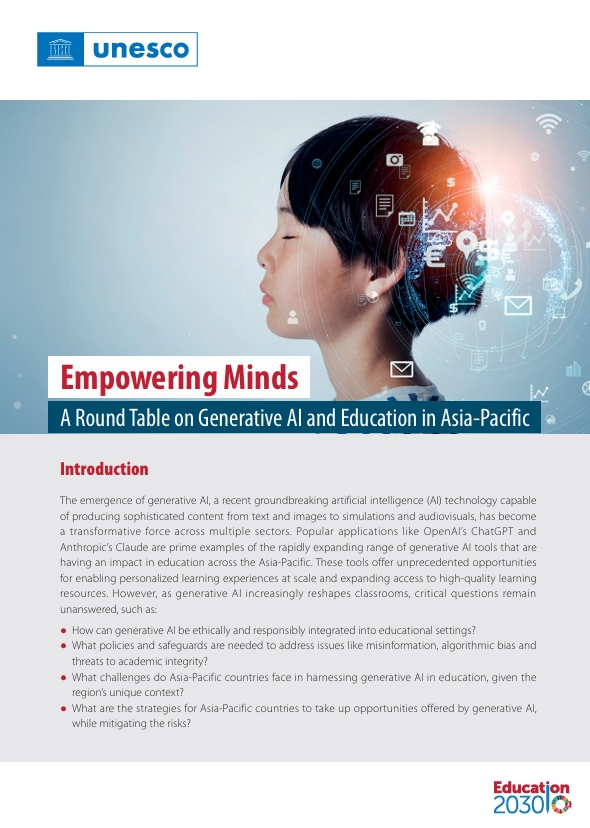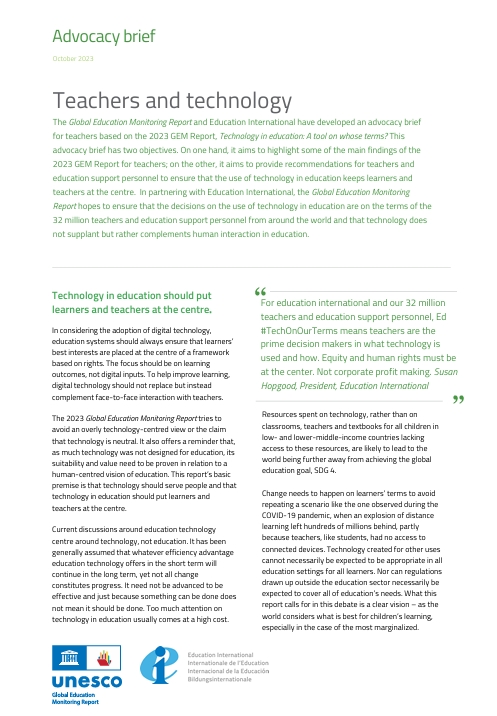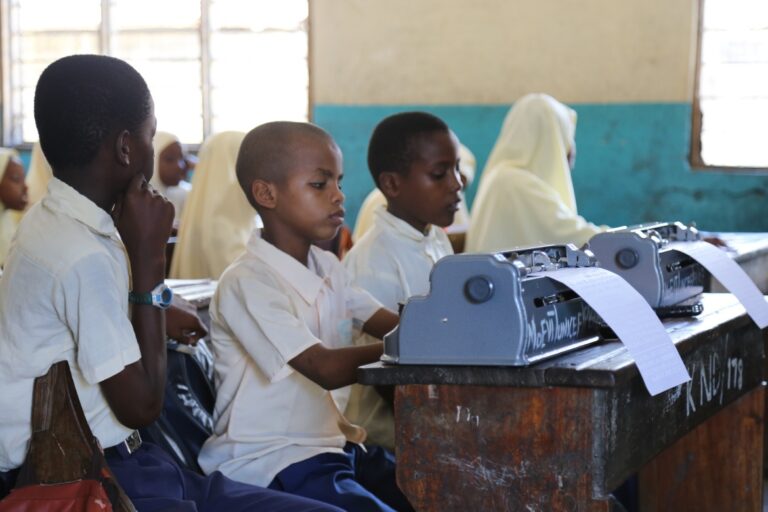Parents and caregivers around the world seek guidance on how to foster the optimal development of young children. Increasingly, they are turning to technology for answers. Greater access to mobile phones, improved connectivity, and the emergence of new technologies have facilitated a rapid shift in how families and others supporting young children gather information and resources. This shift was accelerated by the global challenges brought about by the COVID-19 pandemic, including disruptions to both service delivery for young children and families and regular social connections.
Results for Development (R4D) recently collaborated with the Bernard van Leer Foundation to explore the role of technology for parents, caregivers, and the early childhood workforce supporting children ages 0 to 5 globally. Through a literature review and key informant interviews, our study offers insights for optimizing the design, use and influence of digital tools such as mobile apps, text messaging programs, and chatbots. In addition, profiles of 23 specific tools included in the sample are featured in an online database.
Here, we share some of the lessons we learned for increasing the impact of these tools (Full report can be found here):
1. Design for and with users
To build an effective tool, developers must understand and work directly with their users. In addition to ensuring that a tool is addressing a particular pain point or need, accessibility and relevance of content are important considerations, especially for parents who come from low literacy environments. Designing for users means that developers should focus on delivering content in a tone and format that resonates with parents, such as using audio/video content or incorporating images that reflect diverse backgrounds.
Creating “bite-sized” content or micro-learning experiences can help simplify messaging and increase user engagement.
In India, Paalan 1000, a mobile app that provides parenting advice, offers content in both written and audio form to ensure usage in rural settings where literacy levels remain low.
Moreover, designing with users means regularly collecting feedback to ensure the content remains relevant and the tools remain user-friendly.
The Baby Buddy app, a free interactive pregnancy and parenting app in the United Kingdom, employs a “Parent Panel” to gather feedback on ease of use and relevance of the material so that the developers can adapt to the evolving needs of their users.
2. Keep users engaged with the right technology
Maintaining user interest in digital tools can be challenging. Providing customizable content based on user and child profiles, such as age, gender, and developmental stage can help engage busy parents over time.
Nudges, such as sending in-app reminders for follow-up visits or encouraging users to try new activities, can also help sustain use.
Further, gamification elements (e.g., emoji-based progress trackers) also help keep users engaged. For example, Jornada Online Primeira Infância (JOPI), a training platform for social workers conducting home visits in Brazil, uses interactive quizzes to make learning fun.
Developers should also focus on leveraging existing and tested technologies. Text messaging can effectively reach parents with basic mobile phones and no internet access, while platforms like WhatsApp are preferred in regions with high usage rates.
Although connectivity challenges, especially in rural areas, can hinder usage, some tools allow offline access, compatibility with older devices, and data usage options.
ParentText, an automated messaging service that provides content based on evidence-based parenting programs, mitigates this issue by allowing parents to choose their preferred level of data use – basic, medium, or high, to determine if they will receive only text-based messages or both text-based and multimedia messages.
3. Combine digital tools with in-person support
Bringing together digital and in-person elements into parenting programs enhances families’ commitment and increases the impact of interventions. Many tools recognize the importance of establishing relationships and trust through in-person support, leveraging community connections and trusted providers.
For example, MomConnect, a WhatsApp-based chatbot for pregnant and new mothers in South Africa, utilizes focal points in each province where it operates to ensure staff at health clinics know about the service.
Even when in-person support is limited, some form of human interaction, such as virtual communication via WhatsApp or Facebook groups, can help enhance user engagement. Through their digital platform, Ready Rosie provides a space for parents and educators to connect by sending private messages and utilizing a forum for sharing tips.
4. Invest in partnerships for sustainability
Establishing partnerships can help new initiatives build on existing efforts, reduce costs, and reinforce technical expertise. Partners bring in critical knowledge and support, particularly around research and evaluation, tool maintenance, and uptake.
Partnerships with local grassroots and non-profit organizations, health centers, preschools, and frontline workers have also been leveraged to reach and recruit users.
For example, SMS4Dads partners with National Rural Health Alliance and Indigenous HealthInfoNet to expand their support to fathers in rural and remote areas, as well as Aboriginal and Torres Strait Islander men.
Government partners can also support the sustainability of digital tools. Ongoing investments are required not only to build tools but also to maintain (e.g., fix bugs), scale, and upgrade them (e.g., adding new features, new content). Generating buy-in and support from the government to champion the initiative, and cultivating collaborations and partnerships to reduce or share costs are some strategies adopted by tool developers to support long-term sustainability.
For example, D-Tree, Medic, and the Ministry of Health in Zanzibar have developed a long-term transition plan for running Jamii Ni Afya, which includes a tool to support community health volunteers and their supervisors.
Digital tools are increasing access to and enhancing early childhood development. To maximize the impact of these tools, developers and program managers should prioritize user-centered design, accessible technology, innovative engagement strategies, and in-person support. While there is still a lot to be learned as new tools are deployed, there are important lessons from these early experiences that can be put into practice to promote early childhood development.
Connect with us :






